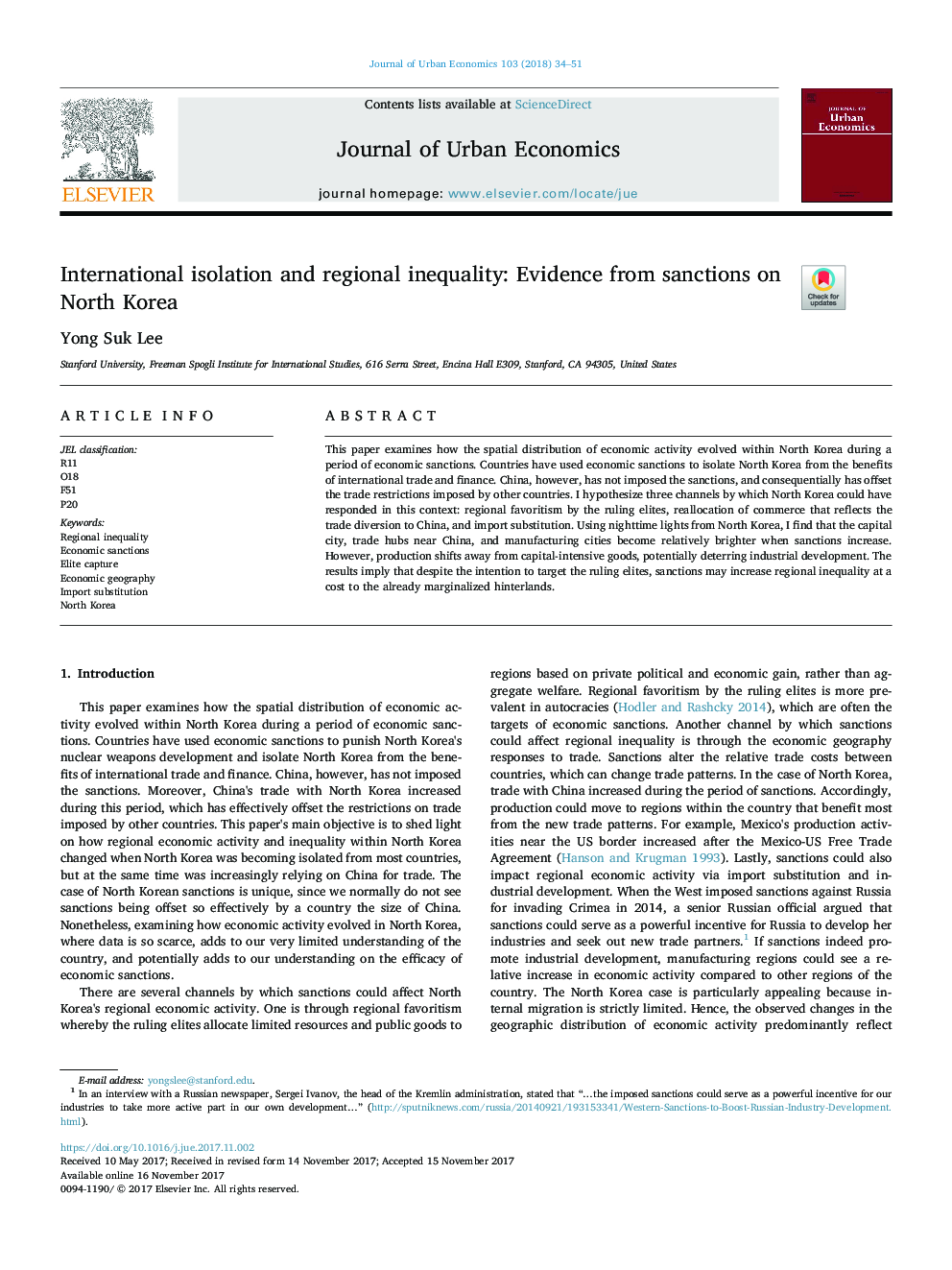| Article ID | Journal | Published Year | Pages | File Type |
|---|---|---|---|---|
| 7370937 | Journal of Urban Economics | 2018 | 18 Pages |
Abstract
This paper examines how the spatial distribution of economic activity evolved within North Korea during a period of economic sanctions. Countries have used economic sanctions to isolate North Korea from the benefits of international trade and finance. China, however, has not imposed the sanctions, and consequentially has offset the trade restrictions imposed by other countries. I hypothesize three channels by which North Korea could have responded in this context: regional favoritism by the ruling elites, reallocation of commerce that reflects the trade diversion to China, and import substitution. Using nighttime lights from North Korea, I find that the capital city, trade hubs near China, and manufacturing cities become relatively brighter when sanctions increase. However, production shifts away from capital-intensive goods, potentially deterring industrial development. The results imply that despite the intention to target the ruling elites, sanctions may increase regional inequality at a cost to the already marginalized hinterlands.
Keywords
Related Topics
Social Sciences and Humanities
Economics, Econometrics and Finance
Economics and Econometrics
Authors
Yong Suk Lee,
